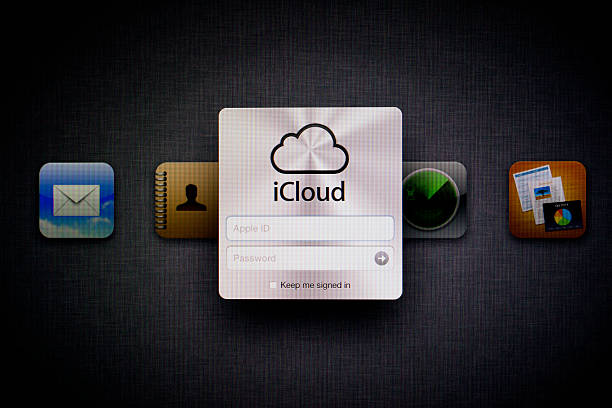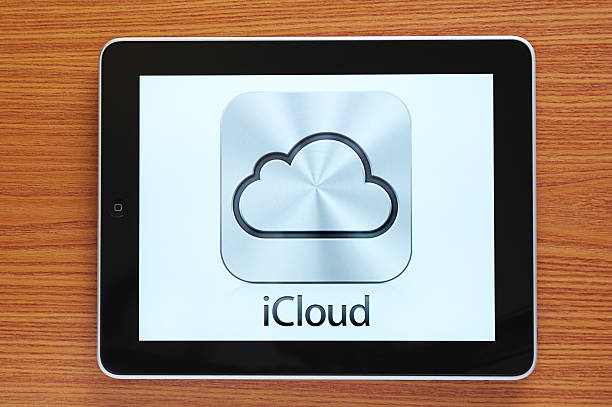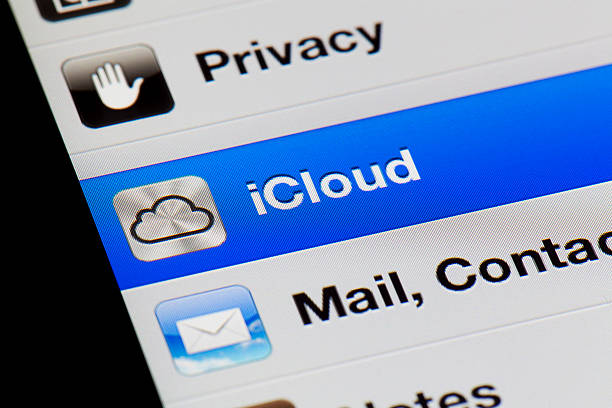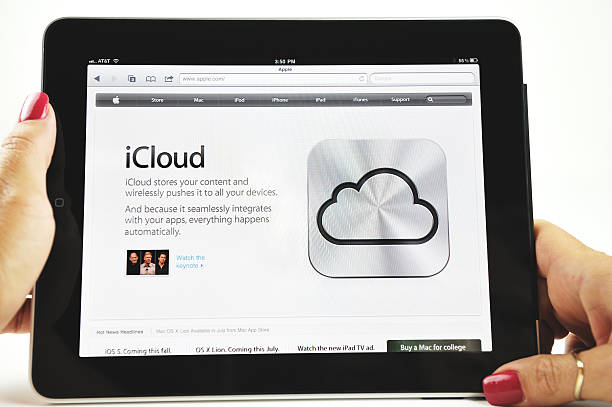
Izmir, Turkey - November 15, 2011: Apple web page iCloud displayed on a computer screen. iCloud is a cloud storage service from Apple. iCloud users access personal music, apps, photos and more content from iPhone, iPad, iPad Touch, Mac and PC. iCloud provide 5GB of free storage.
On December 4th, 2019 Apple Inc. suffered what it ranks as its “worst outage” in recent history. As a result, iCloud experienced service outages for several users and an issue with e-mail and other services that utilize the company’s cloud technology. As a result, many users could not access their iCloud accounts and data, including photos, music and files.
Faced with such unprecedented disruption to the services they depend on most, how did Apple resolve this issue?
Apple undertook a thorough review of its cloud system architecture to determine the cause of the outage and ensure that it would not happen again. Working alongside external partners such as Amazon Web Services (AWS) and Microsoft Azure Cloud Services , Apple was able to identify a potential configuration error in one of its databases that caused interruptions in service and data loss. This was then addressed quickly to restore full functionality and prevent any further issues from occurring in the future.
iCloud outage: Apple says problem is fixed but some users still complaining
On July 16th, 2019, a large-scale outage of Apple’s iCloud service caused disruption and confusion for many users. Apple acknowledged the issue and issued a statement to assure customers they were working to fix the problem. However, despite the statement, many users reported continued difficulties.
In this article, we will look at how Apple addressed the iCloud outage and what the company did to keep users back up and running.
What Caused the Outage
On December 21st, 2020, iCloud users experienced an outage in some international markets, disrupting service for millions of users. Apple confirmed the outage, stating that a server malfunction caused it.
The disruption to service lasted for two days and is believed to have resulted from a technical problem in one of their cloud services. The problem originated from one of Apple’s two primary Domain Name System (DNS) servers – which serves as a directory for where data is held and enables the efficient resolution of internet requests. Both DNS servers were affected but only one was impacted enough to cause disruptions to service.
Apple addressed the issue quickly and released a statement that same day confirming they had identified the source of the problem and were working on a solution. As part of their efforts to prevent further incidents they also moved both servers over to reliable third-party providers who would monitor any changes or problems with greater accuracy and take corrective action more quickly if needed.
The following day Apple fixed the issue by relocating both DNS servers back inside their secure environment, completely insulating them from unreliable third-party vendors. In addition they implemented more rigorous monitoring protocols which would allow them to respond quickly if similar issues occurred again.
This incident highlighted how important regular assessment and maintenance are – even with large cloud systems such as iCloud – and how critical it is for organizations to ensure these critical services are always available no matter what challenges might arise in planning or infrastructure in future.
The Impact of the Outage
The iCloud outage had a wide-reaching impact. Reports indicated that users could not access web applications, email, calendar, notes and contact information when hosted on iCloud. This had the potential to severely disrupt consumers’ lives not only in terms of work but also socialization and entertainment.
Employees of Apple who used the services could not access their corporate systems either as workers could not log in remotely or easily collaborate for some time after the outage began. iCloud is a popular platform for collaboration at Apple that is used daily by many employees.
Furthermore, developers who depend upon App Store statistics likely saw an interruption in downloads and analytics during the incident. A few services like iCloud Storage API moved into degraded state meaning that the server would reject any chunk of data beyond a certain size.
It appears then that the impact of this outage extended far beyond individual subscribers and disrupted Apple’s multitudes of corporate customers, illustrating just how important cloud-based computing is becoming in everyday life today.

Apple’s Response
When a glitch in Apple’s iCloud service caused an outage that affected several users late last week, Apple moved quickly to address the issue. The company said it had “identified and resolved” the issue, but many users were still reporting problems.
So how did Apple solve this problem? We’ll take a look at their response.
Apple’s Initial Response
When the iCloud outage was first announced, Apple was quick to respond. In a public statement on their website, the company acknowledged the issue and promised to provide updates as soon as more information was available. The statement also included contacts for customers who require further support.
Apple followed up the public statement by maintaining a dedicated section on its system status page to inform customers about any changes or updates related to iCloud’s outage. The company also increased its staff to provide faster customer service via telephone and online chats on Apple Support and iCloud websites.
However, some consumers criticized Apple’s initial response, saying that it lacked transparency and urgency compared to other technology companies such as Google, which provides detailed updates within minutes of an incident being reported.
Apple’s Long-Term Solution
Apple implemented a long-term solution to ensure that an event such as the iCloud outage doesn’t happen again. In addition, the company noted in their statement regarding the incident that they had added additional “capacity and automated processes to prevent similar outages” and that they were working on “additional capacity, backup systems and other measures to prevent recurrences of similar incidents.”
In the weeks after the initial outage, Apple released further details about their efforts to prevent future problems. This included expanding server network capacity and investing in more precise monitoring software. Additionally, the company stated that they were adding authentication procedures for users, dual-factor authentication for iCloud accounts, improved web content caching technologies, software developed specifically for managing large-scale traffic around core services and back-end databases; as well as redundant routing connections between data centers so user requests can quickly be directed from one data center to another should an issue arise.
Apple also noted further steps were being taken including creating comprehensive disaster recovery plans at all levels of their cloud infrastructure in case of any emergencies or system failures; tightening access control policies; increasing transparency among employees who are working on system maintenance tasks; crowdsourcing technology input from outside experts; and more efficient alerting systems when a problem arises.

User Feedback
Apple recently experienced a major iCloud outage which disrupted customers for hours. After fixing the issue, Apple said that the problem was solved but some users are still complaining about the issue.
In this section, we’re going to take a look at user feedback to get a better understanding of the situation.
User Complaints
Users quickly shared their displeasure over the incident when Apple’s iCloud went down in February of 2021. Countless posts on social media and forums described frustration over the inability to access their data, sometimes coupled with feelings of incompetence and helplessness due to a lack of understanding of how Apple handled the situation.
Overall user complaints about the outage largely focused on several points:
- Long wait times for customer service representatives to answer calls or failure to connect at all
- Failure for iCloud authentication requests that kept users locked out of their accounts
- Inability to access music and photos stored on the iCloud despite prompt payment for services
- Disappointment in Apple’s insufficient explanation of why or how (or if) they fixed the issue
- Confusion regarding whether the company was liable for any lost or corrupted data
The outage understandably caused many customers to question their trust in Apple as a reliable source for digital storage.

Apple’s Response to User Complaints
As soon as Apple became aware of the iCloud outage in April 2021, they publicly addressed the issue with their customers. Their statement was shared via feedback forums, social media posts, and press releases on their website. In addition, Apple apologized to its customers for any inconvenience caused and reaffirmed their commitment to ensuring all Apple community members have a positive experience.
Apple explained that an internal software issue within a data center caused the iCloud outage. While engineers worked around the clock to address this concern, a team of customer service representatives were available to answer questions and provide support.
Following the incident, Apple fine-tuned policies to reduce risk of outages in the future. There have also been substantial changes on both technological and human levels. For instance, increasing automation for hardware maintenance is now a priority for Apple, which will help decrease reliance on manual intervention and make repairs more efficient. In addition, staff are better trained when it comes to communicating with customers during outages and responding to user feedback after resolving technical issues.
Conclusion
Apple’s response to the iCloud outage was quick, efficient, and effective. The company was able to identify and correct the underlying technical issue in a very short period. Additionally, Apple proactively communicate the issue’s status throughout and after the incident, which allowed customers to remain informed about what was happening with their data.
Ultimately, users reported high levels of satisfaction with Apple’s handling of the situation. Apple showed exemplary customer service during this event and responded effectively despite a challenging outage. With its swift resolution process and proactive communications approach, Apple demonstrated its commitment to always prioritizing customer experience.



